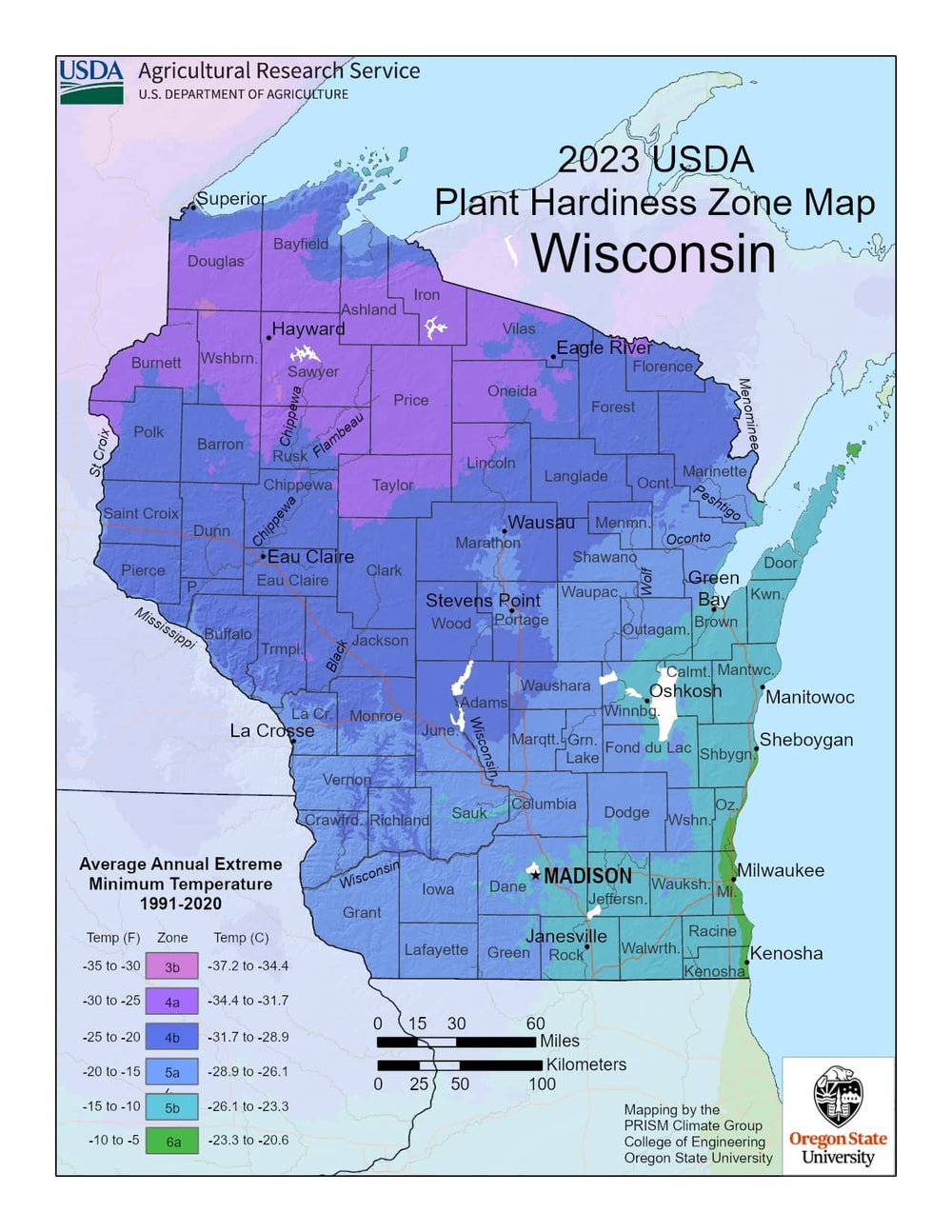Image from USDA
Characteristics of Wisconsin’s Planting Region
Wisconsin’s climate is classified as humid continental, with cold winters and warm summers, creating clear and distinct seasons.
This makes the state ideal for many cool-season crops and hardy perennials.
As a Wisconsin gardener, you can expect:
- Warm summers, with July highs ranging from 75°F to 85°F (23.9°C to 29.4°C)
- Cold winters, with January lows between -10°F and 10°F (-23.3°C to -12.2°C), depending on location
- Average annual precipitation of 30–35 inches, including significant snowfall in winter
- Short growing seasons, typically ranging from 90 to 160 days depending on the region
Most planting starts around mid-May after the last frost, and harvesting typically ends by early October. Gardeners near Lake Michigan may enjoy slightly extended seasons thanks to the moderating lake effect.

Challenges of Growing in Wisconsin
Short Growing Season
The biggest hurdle for Wisconsin gardeners is the limited frost-free period, especially in the northern and central parts of the state. Planning ahead and choosing early-maturing crops is key.
Heavy and Cold Soils
Many areas in Wisconsin have loamy or clay soils that can be slow to warm up in spring and prone to compaction. Amending soil with compost and organic matter helps improve drainage and soil health.
Pest and Weather Extremes
Frequent spring rains, late frosts, and sudden summer droughts can impact plant health and yields. Additionally, pests like cucumber beetles, cabbage loopers, and slugs are common threats.

The Benefits of Using a Greenhouse in Wisconsin
A greenhouse offers Wisconsin gardeners a practical way to overcome climate challenges and extend productivity. Whether protecting tender seedlings from a late frost or giving tomatoes a head start, greenhouses can provide essential control and protection.
1. Extend Your Growing Season
- Without a Greenhouse: Outdoor planting usually begins in mid-May and wraps up by early October. Gardeners in northern areas might only get 90 frost-free days.
- With a Greenhouse: You can start seeds in February and continue harvesting crops like greens, herbs, and root vegetables well into November or even beyond. This extended growing window is a game-changer for anyone looking to grow a wider variety of produce or maintain year-round harvests.
Learn more about your area's specific growing dates and the best vegetables to plant in each part of Wisconsin.

Customer images of their Greenhouse set up in Wisconsin
2. Grow a Wider Variety of Vegetables Without a Greenhouse:
-
Without a Greenhouse:
Wisconsin’s outdoor climate is best suited for crops like:
|
Corn Soybeans Potatoes Winter squash Tobacco |
Peaches Cucumbers Squash Cantaloupes Lima beans |
-
With a Greenhouse:
You can enjoy growing more temperature-sensitive or long-season crops such as:
|
Arugula, Spinach, Broccoli, Cauliflower, Brussels sprouts, Tomatoes, Peppers, Cilantro, Eggplant, Cucumbers, environment) |
melons, Zucchini, Carrots, Beets, Radishes) Kale, Swiss chard, Collard greens) Basil,
|
Parsley, Rosemary, Thyme, Green beans, Green onions, Leeks) Lemons, Limes, Kumquats, Figs |


